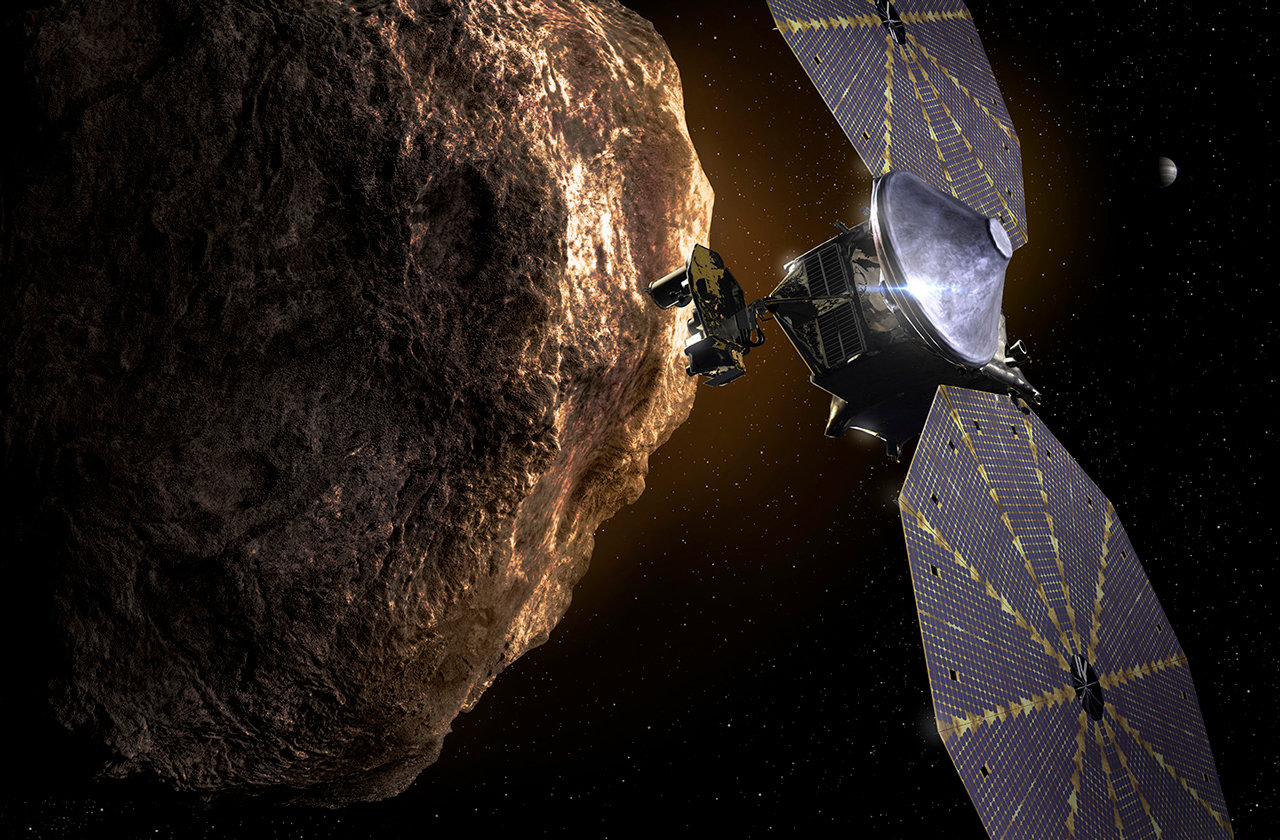SEPTEMBER 13, 1959: The then-Soviet Union’s Luna 2 spacecraft impacts the lunar surface slightly to the east of the Mare Imbrium. This was the first human spacecraft to reach the moon and the first spacecraft to impact another object in the solar system.
SEPTEMBER 13, 1985: The U.S. Defense Department’s P78-1 satellite is deliberately destroyed during the course of an Anti-Satellite (ASAT) weapon test. Among P78-1’s complement of instruments was the SOLWIND coronagraph – still functioning at the time of destruction – which discovered ten comets between 1979 and 1984, nine of these being Kreutz sungrazers (discussed in a future “Special Topics” presentation). The first of these comets – the first comet ever discovered from a satellite – is a previous “Comet of the Week.”
SEPTEMBER 14, 2006: The Catalina Sky Survey program in Arizona discovers the tiny asteroid designated 2006 RH120. No more than a few meters in diameter and probably a piece of the lunar surface ejected during an impact event, 2006 RH120 spent approximately one year orbiting Earth as a temporary second moon before escaping into orbit around the sun. It is discussed in more detail in a previous “Special Topics” presentation.
SEPTEMBER 14, 2020: The main-belt asteroid (373) Melusina will occult the 7th-magnitude star HD 21483 in Aries. The predicted path of the occultation passes south to north and crosses east-central Australia (eastern South Australia, including just west of Adelaide, and western Queensland), western Papua New Guinea, open waters of the western Pacific Ocean, and the southern tip of the Kamchatka Peninsula in Russia.
SEPTEMBER 15, 1682: Comet 1P/Halley passes through perihelion at a heliocentric distance of 0.583 AU. Among those who observed the comet on that return was the British astronomer Edmond Halley, who later would correctly deduce that it was identical to earlier-seen comets and that it returns approximately every 76 years, and would return in 1758. After the comet was recovered that year it was named in Halley’s honor. Comet Halley is the subject of a previous “Special Topics” presentation.
SEPTEMBER 15, 2027: NASA’s Lucy mission is scheduled to fly by the “Jupiter Trojan” asteroid (15094) Polymele. Lucy is discussed in a previous “Special Topics” presentation, and Trojan asteroids are discussed in a future “Special Topics” presentation.

SEPTEMBER 15, 4479: According to a study published in 1995 by British astronomer John Chambers, Comet 109P/Swift-Tuttle will pass so close to Earth that “it is not possible to make accurate predictions of its future motion beyond that point.” Comet Swift-Tuttle is the parent comet of the Perseid meteor shower and is a future “Comet of the Week.”
SEPTEMBER 17, 1882: The Great Comet of 1882 – one of the brightest comets of the entire 2nd Millennium – passes through perihelion at a heliocentric distance of 0.008 AU. The Great Comet of 1882 was a Kreutz sungrazer and is a future “Comet of the Week.”
SEPTEMBER 18, 1965: Two Japanese amateur astronomers, Kaoru Ikeya and Tsutomu Seki, independently discover Comet Ikeya-Seki 1965f. This comet was a Kreutz sungrazer and became the brightest comet of the 20th Century; it is a future “Comet of the Week.”
SEPTEMBER 19, 2020: The main-belt asteroid (24743) 1992 NF will occult the 7th-magnitude star HD 49909 in Gemini. The predicted path of the occultation crosses northern Mexico, far southern Texas, the very southern tip of Louisiana, northwestern Florida, far southern Georgia, and the west-central Atlantic Ocean.
More from Week 38:
Comet of the Week Special Topic Free PDF Download Glossary
Ice and Stone 2020 Home Page


